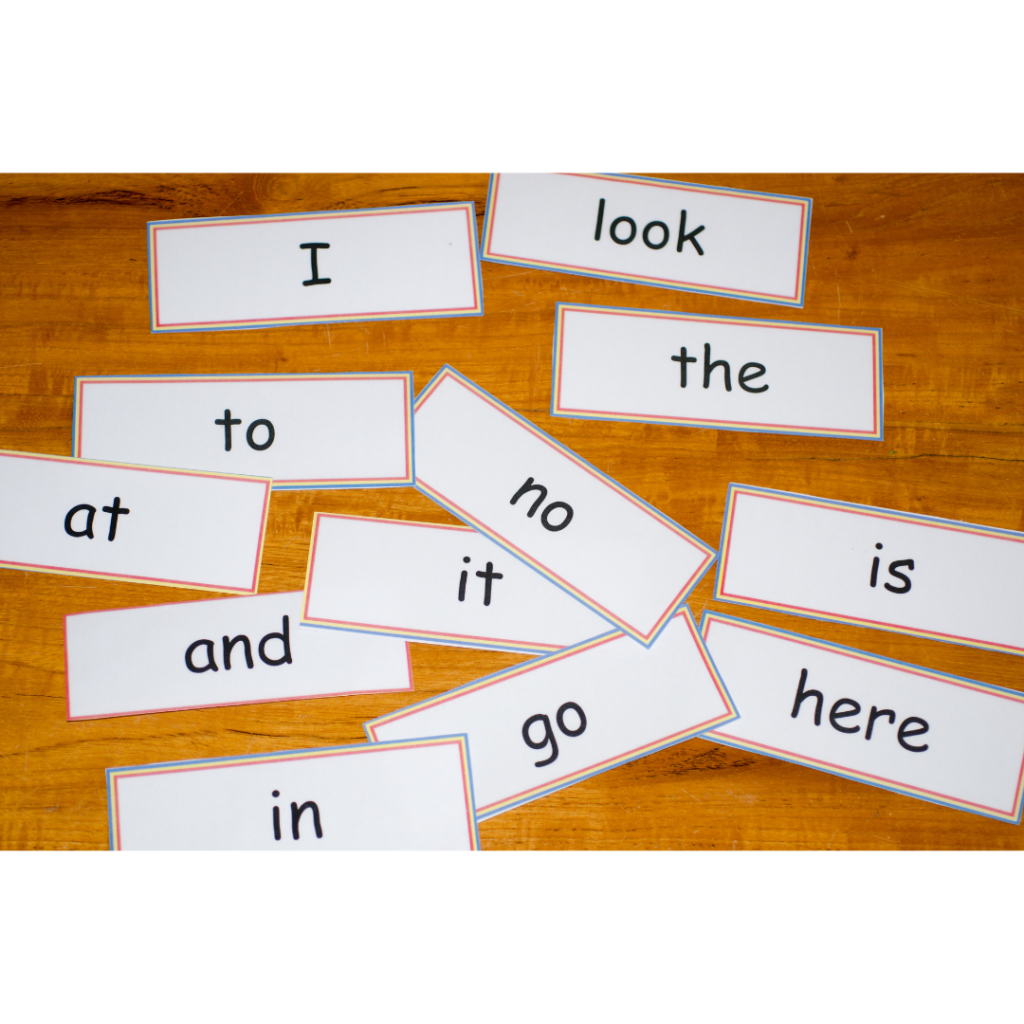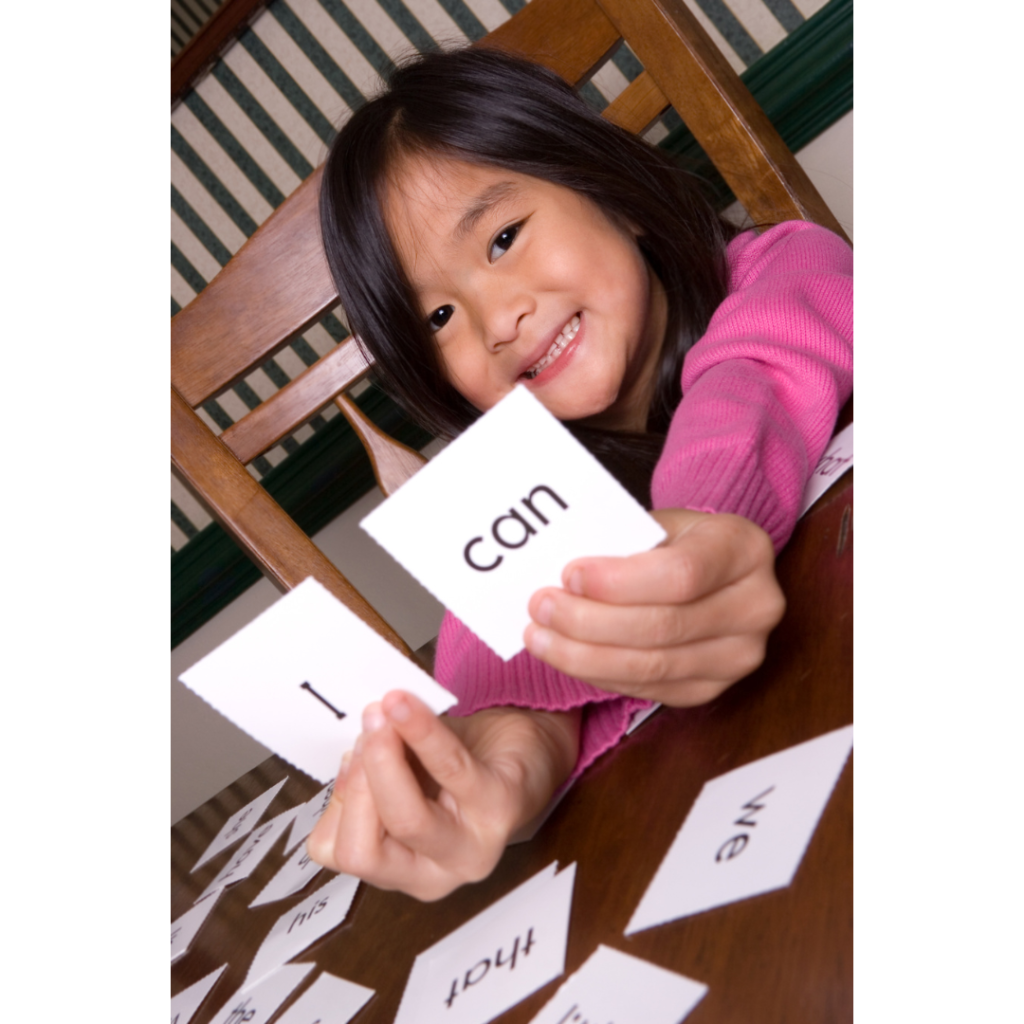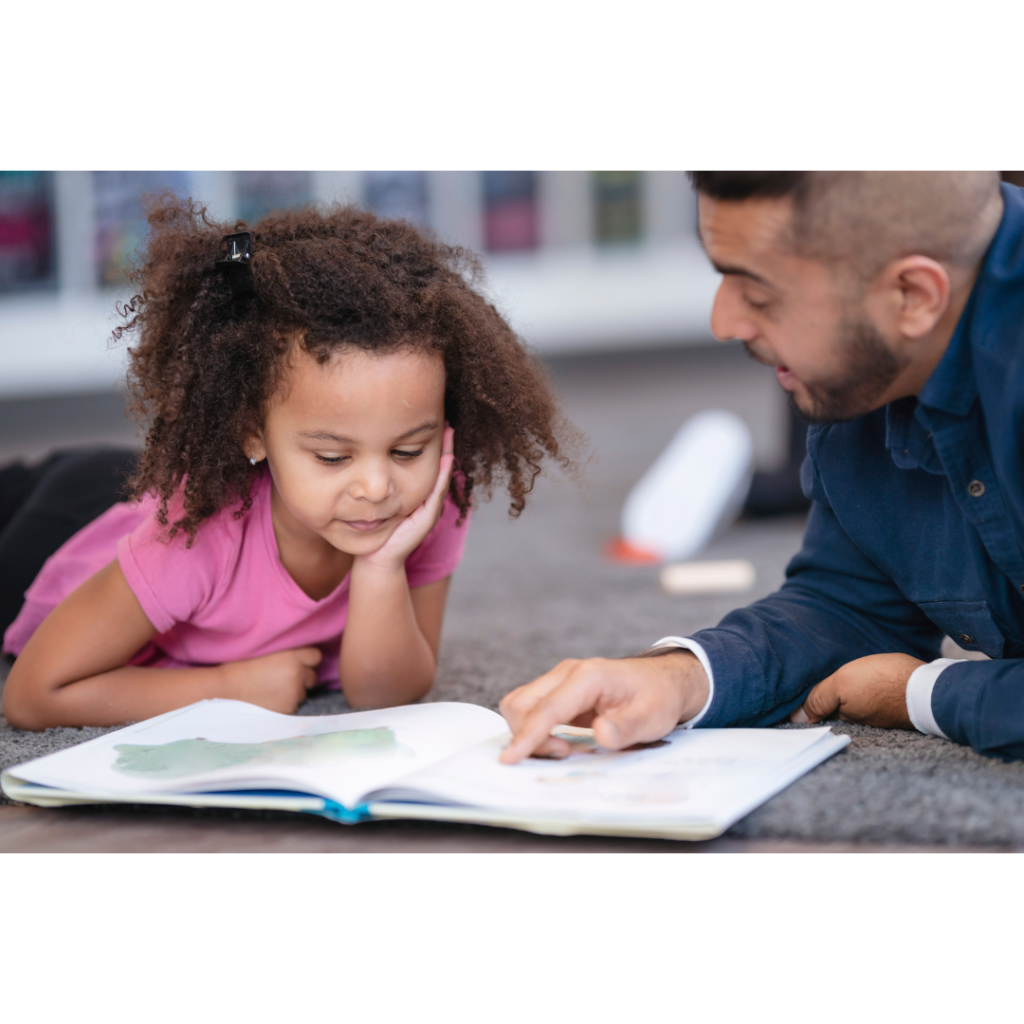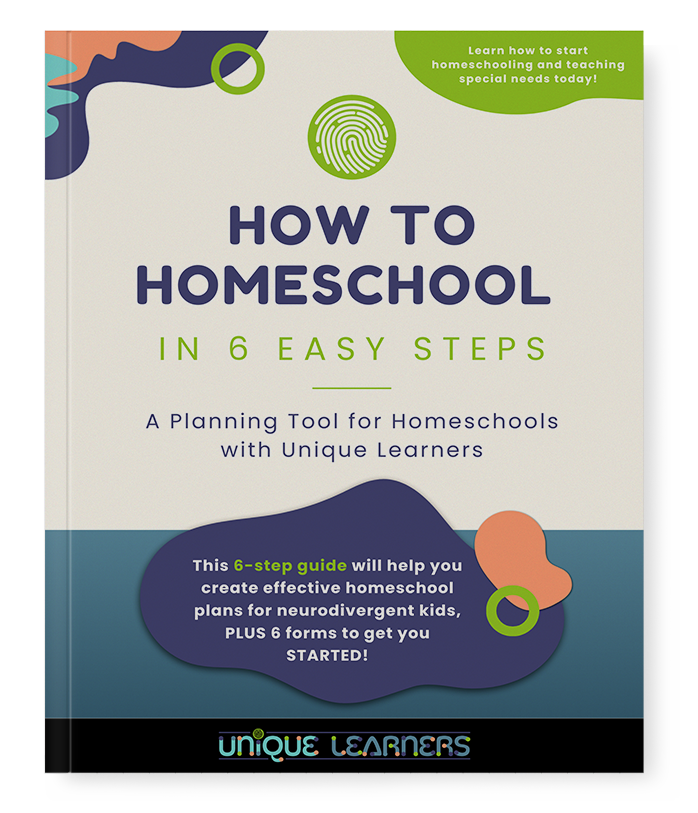Just as the debate between the phonics and sight words approaches to teaching reading, there appears to be a current discussion on the difference between sight words and high frequency words in teaching word recognition. This article will define and show examples of the differences between various methods of teaching word attack skills, and then share the differences between the Fry and Dolch sight words lists.
Teaching sight words does not eliminate phonics.
First, I want to address the die-hard Orton-Gillingham phonics tutors and homeschool moms who will get upset that I’m even talking about sight words. Our main goal in teaching phonics is to give kids the tools to decode words using the structure of the English language. However, our ultimate goal is to create readers who have a solid repertoire of words stored in the brain so that reading becomes fluent enough to enhance comprehension. Every comprehensive Orton-Gillingham phonics program also includes sight words that help to make reading passages balanced with decodable text and those irregular words that must be added to visual memory. This article will concentrate on the differences in what we call sight words; however, this is no way diminishes the importance of teaching the tools of phonics instruction.
Now for some definitions.
What are sight words?
Sight Words are words that are stored in the brain from extensive practice to the point they are recalled automatically and swiftly without sounding out or decoding using the segmenting and blending of phonics. Sight Words may include both phonetically regular words and irregular words that don’t follow phonics rules, as well as nouns and functional words.
Examples of sight words are: the, is, one, big, elephant, yellow, through, etc.

What are decodable words?
Decodable Words are words that follow systematic phonics rules and can be sounded out. Sounding out involves breaking the sounds apart (segmenting) and putting the sounds together to form the whole word (blending). As young readers learn to sound out words, we want them to move beyond sounding out every single word to having a repertoire of stored words that are pulled up automatically. The words were not taught as a whole, but eventually, they become stored and recalled as a whole word. Phonics rules can be continued into morphology where multisyllable words and more advanced vocabulary can be decoded, even into college-level words.
Examples of decodable words are: can, made, steam, which, shop, plastic
What are high frequency words?
High Frequency Words are words that have been arranged based on their frequently in children’s reading text and those found in students’ writing. Just like sight words, these words may be decodable or irregular words, but they are mainly functional words and not nouns. Both the Dolch and Fry lists are considered high frequency lists. Although there is some overlap between the two lists, they were developed from different sources in different decades, based on different age levels of children. Both William Dolch, Ph.D. and Edward Fry, Ph.D. believed in the see-and-say method of teaching word recognition rather than teaching phonics so the methodology of teaching high frequency words is quite different than .
Examples of high frequency words are: the, look, come, into, said, he, again, etc.
What are irregular words?
Irregular Words are words that do not follow typical phonetic decoding rules. Functional words are the primary focus of both the Dolch and Fry lists, with the majority of the lists being irregular. Nearly all Orton-Gillingham phonics programs gradually introduce irregular words as they are needed in reading sentences or decodable passages within that particular program, yet the majority of words in a systematic, multisensory phonics curriculum are decodable.
Examples of irregular words are: said, though, through, buy, does, laugh, eye, etc.

A bit of history for the “why”
William Dolch, Ph.D., and Edward Fry, Ph.D., both promoted the whole word method of teaching reading. Dolch compiled his list in the 1920s to 1930s. He collected 220 high frequency words, not from children’s reading books, but from three different word lists already published by other researchers. Dolch then assembled a list of 95 essential nouns from his sight words list. The Dolch sight words list covers words that kids are expected to learn from kindergarten to second grade.
The Fry Instant Words were compiled in the late 1950s with the intention to update the Dolch list of sight words. The Fry Instant Words were revised again in the 1980s. Unlike the Dolch words, the Fry words list is based on the American Heritage Word Frequency Book. Fry ranked 1,000 words according to their frequency. The Fry words are seen in reading material for kids in grades 3 to 9.
So, what does this all mean for teaching kids to read?
First, regardless of the method you as a teacher prefer, neurotypical children can learn to read regardless of the approach presented to them.

However, kids with special needs learn best from a multisensory approach. That means most of the time, especially for those with dyslexia, students must be taught explicity the structure of the English language through systematic phonics. Using the rules and tools for decoding can help struggling readers to be able to continue to advance to higher level vocabulary.
Sight words must be practiced frequently over an extensive amount of time in order to set the words into long-term memory. Of course, sight words, even when presented as whole words, are retained best when practiced using multisensory activities.
A few students make little to no progress in phonics and seem confused by the process that words must be sounded out. For students who have a strong visual memory, a careful sequence of high frequency words can help establish a repertoire of nouns, words, and high frequency words for basic reading and sentence writing.
My own approach in developing a comprehensive individual reading plan:
I have been teaching long enough to see terminology morph based on current trends, while the typical teaching techniques continue to be moderately ineffective for most kids with special needs because they ignore a need for a comprehensive, multisensory approach.

When programming for struggling readers, I always create a uniquely individual plan that balances phonemic awareness, oral language skills, figurative language understanding, systematic phonics for decoding and spelling, sight word development, reading fluency, fictional/literary reading comprehension, and nonfiction reading comprehension with research skills.
When developing each plan and selecting curriculum, I consider the specific cognitive strengths and weaknesses of the learner, the pace required based on the severity of the student’s special learning needs, and progress from previous instruction.
If you need assistance in planning for your child’s comprehensive reading program, you may want to consider becoming a member of Unique Learners U, where you can have on-going answers to specific questions about reading, writing, math, and homeschooling.
You can also email Sue with your question at sueh@uniquelearners-suehegg.com. We want you to successfully help your child to become a skilled reader!

